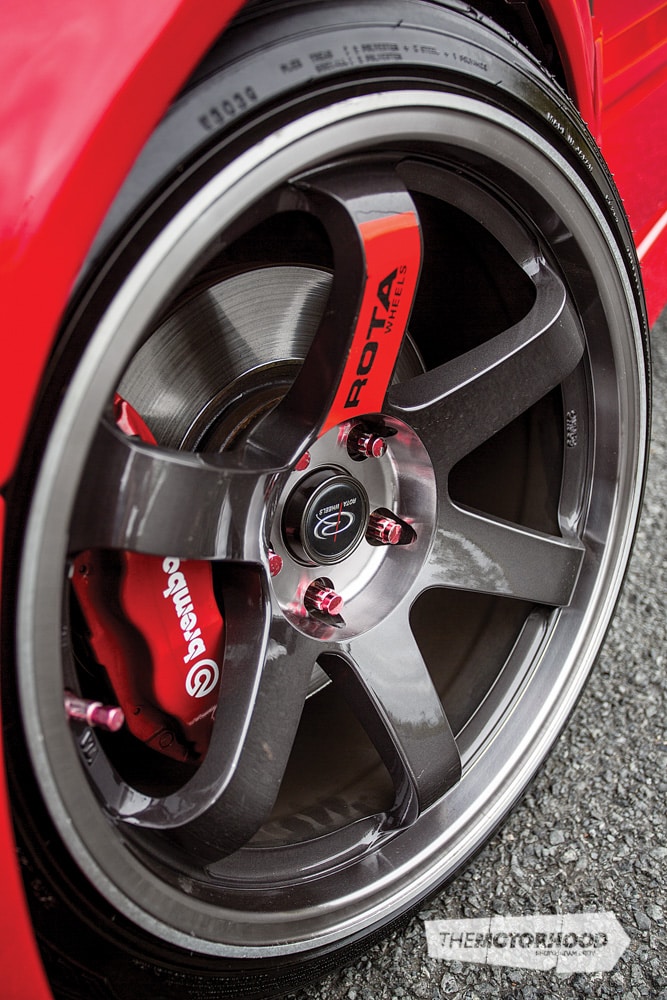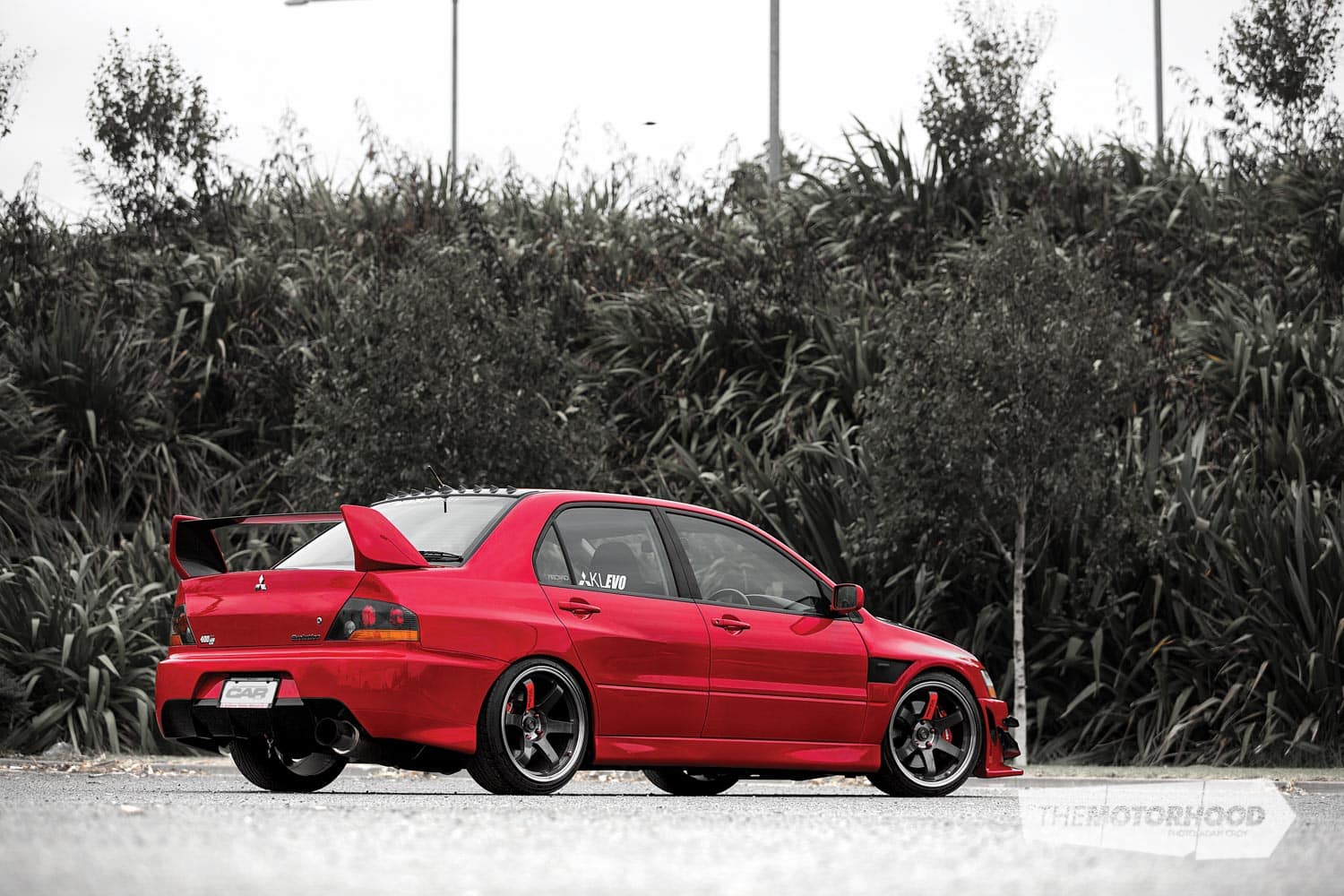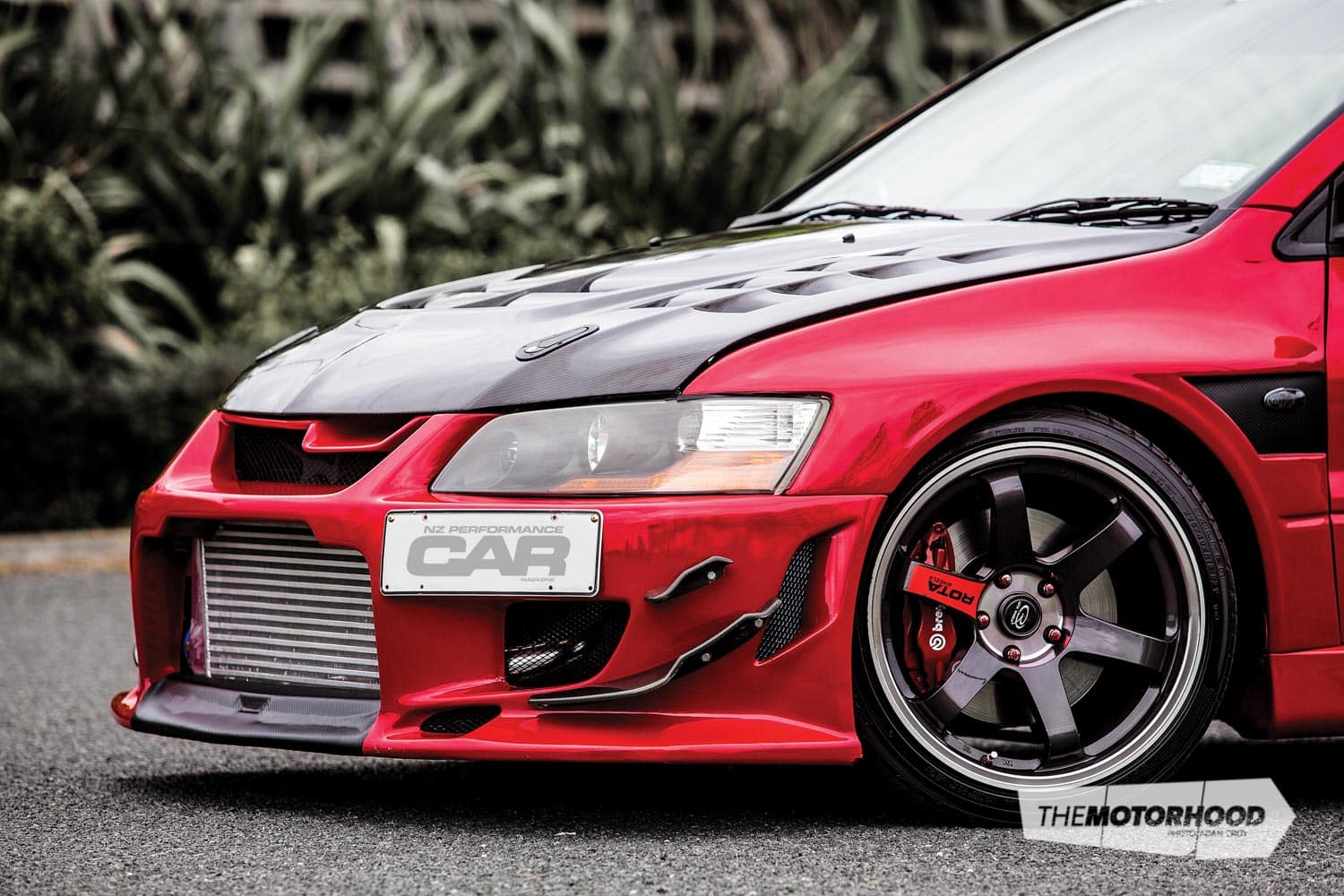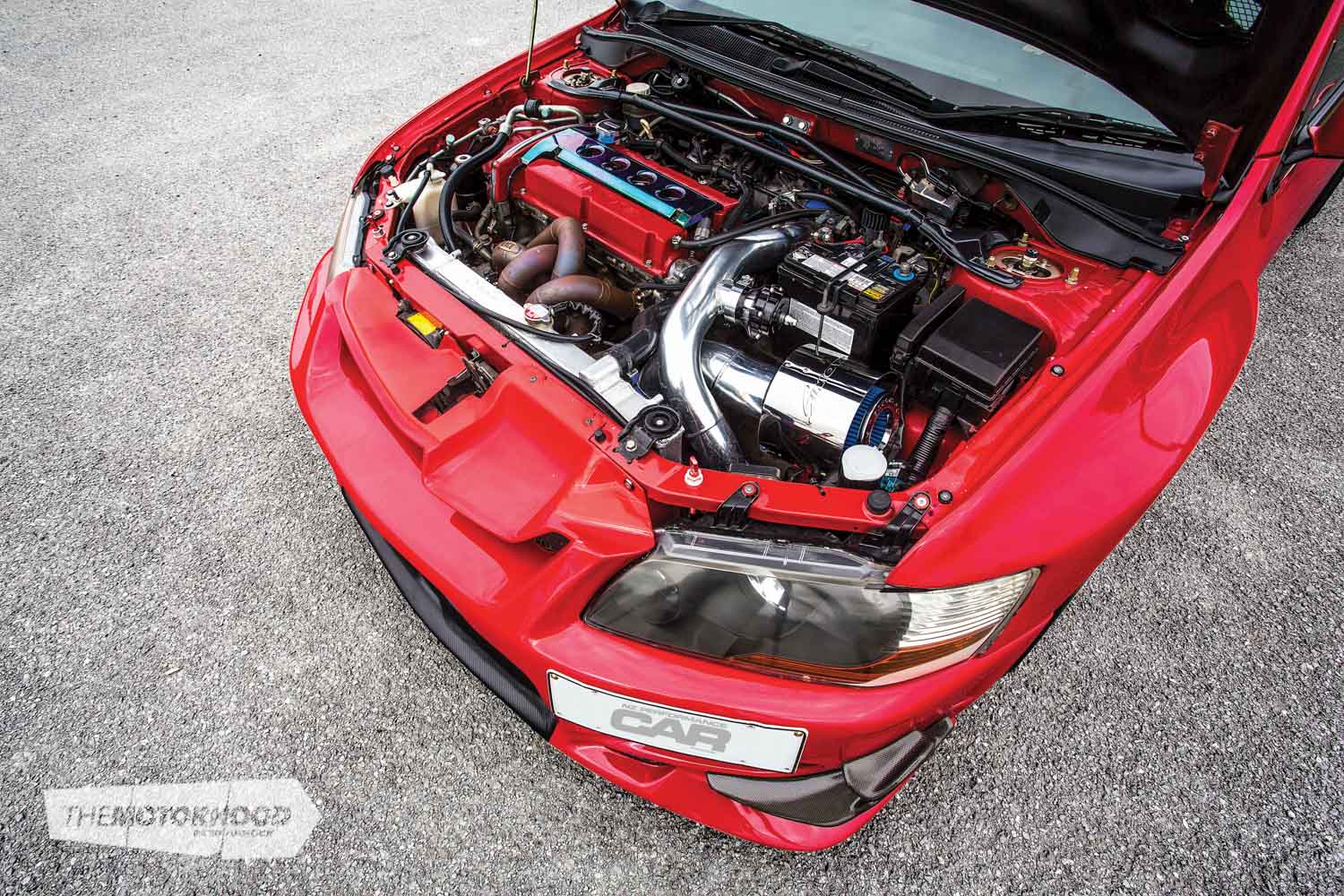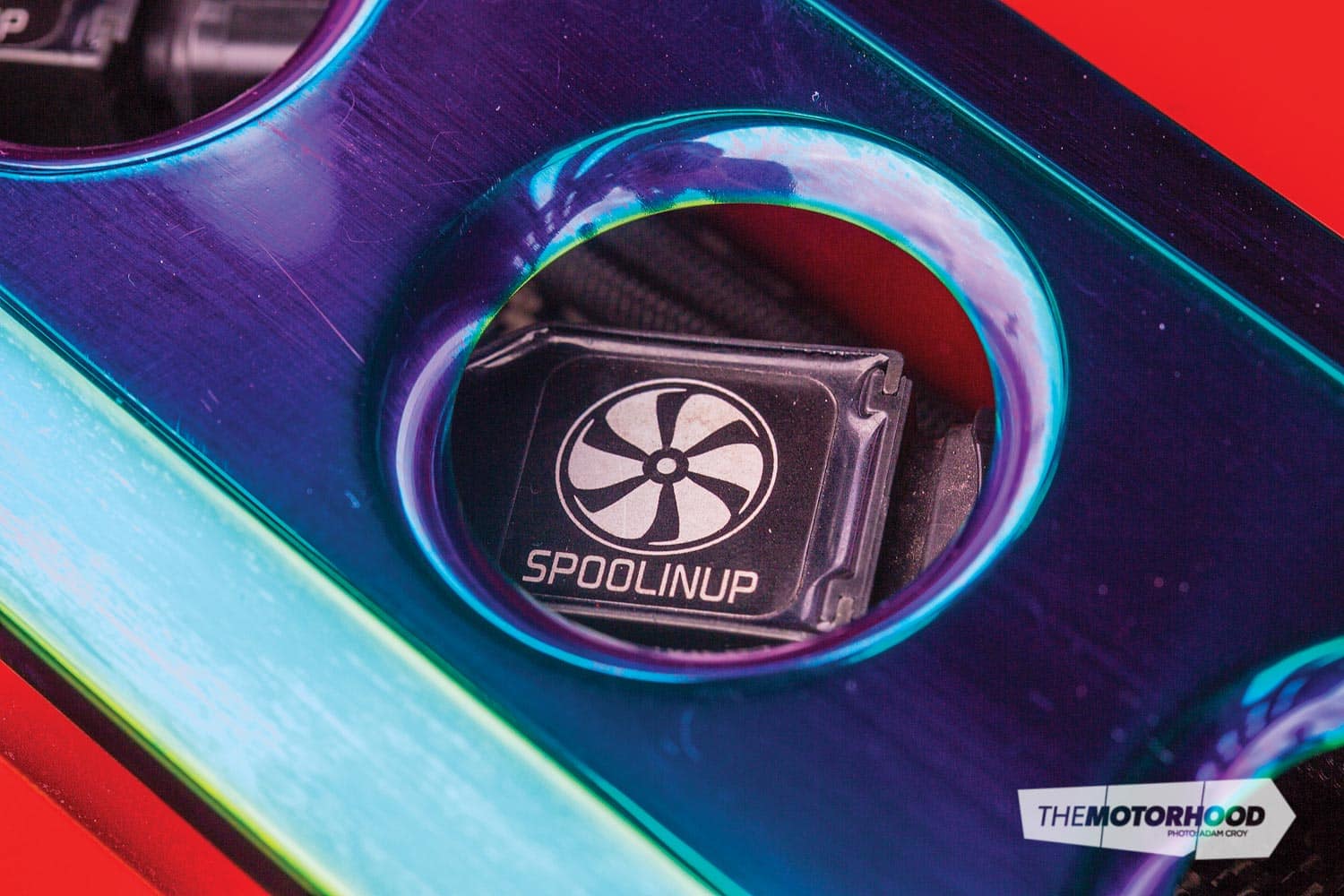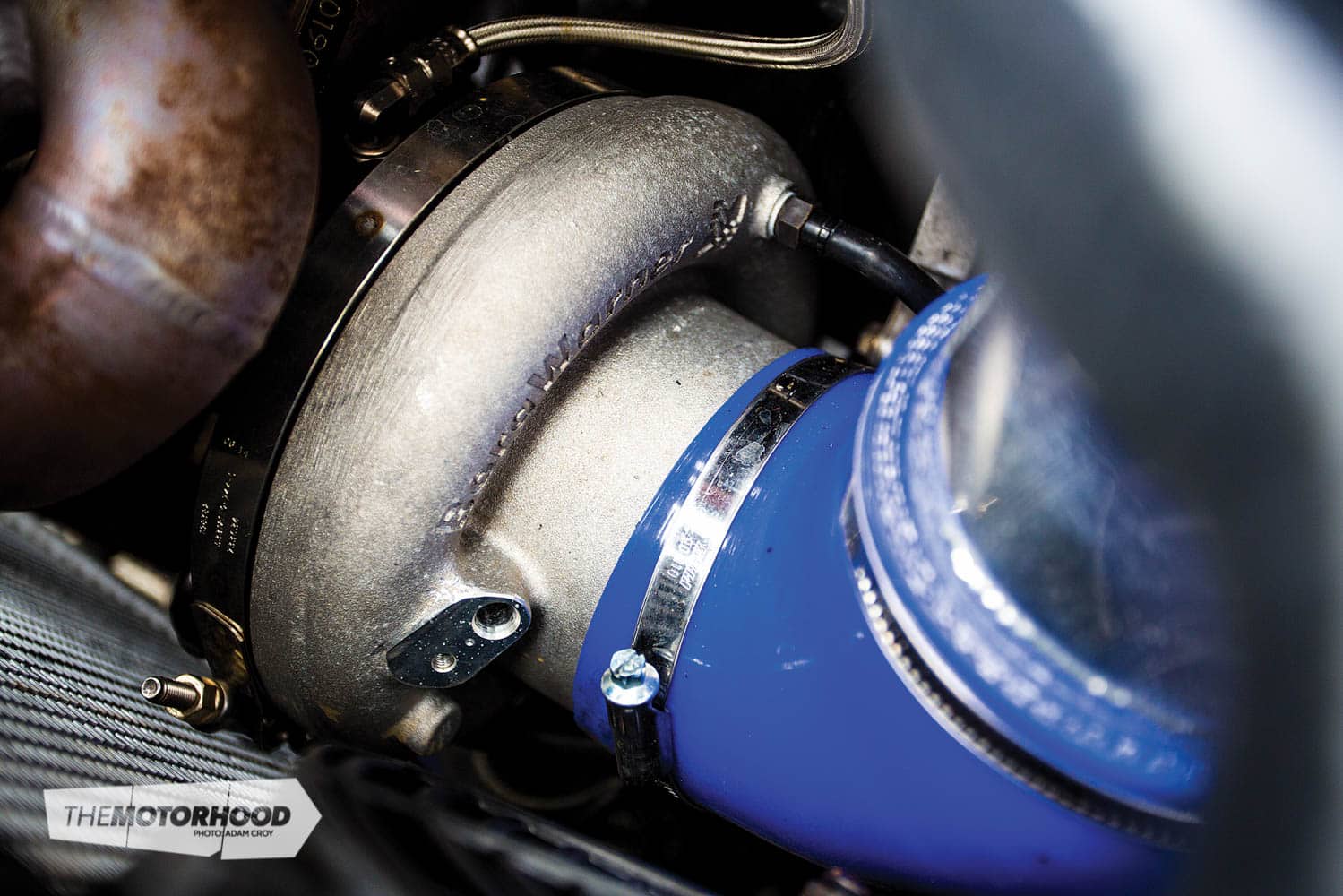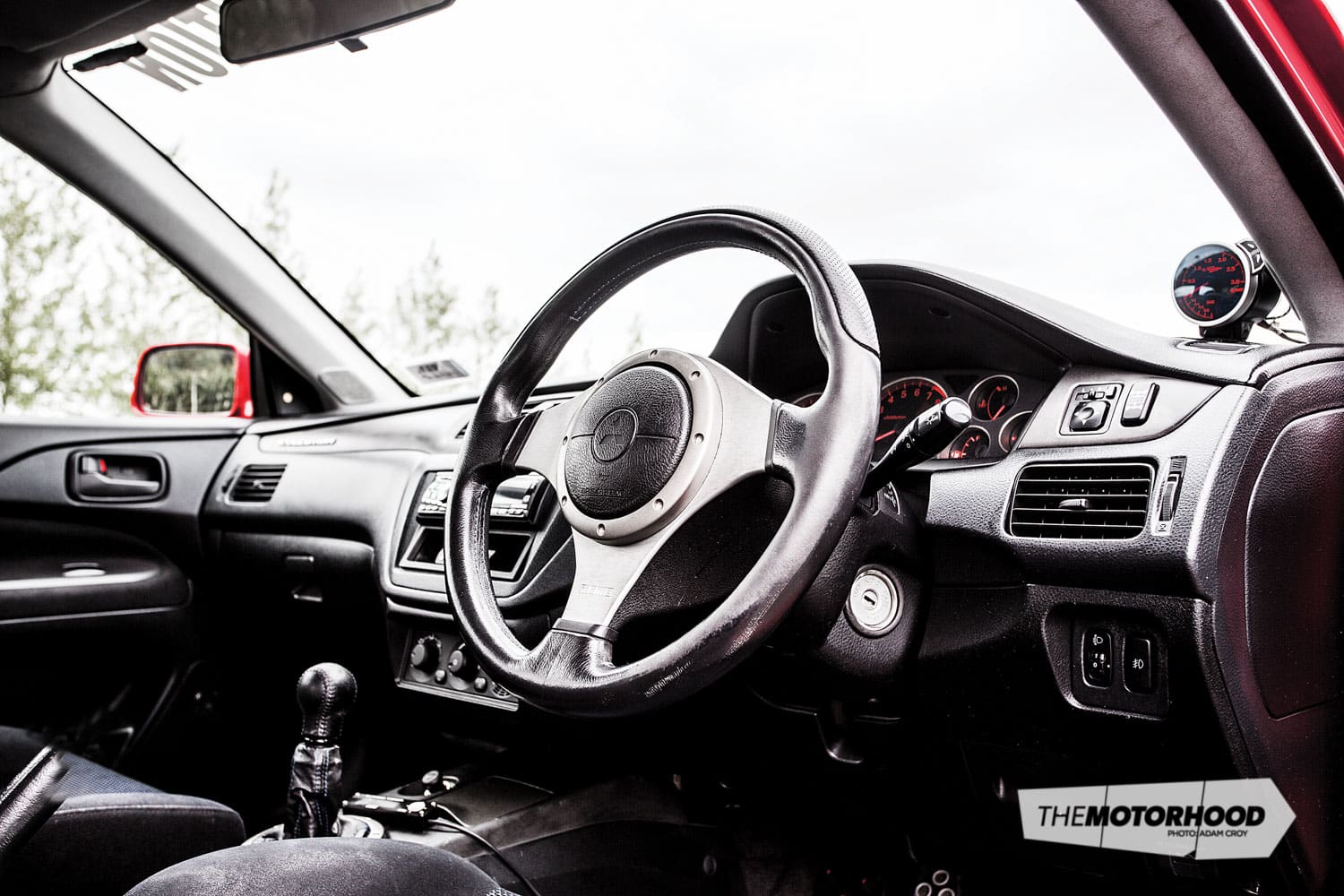data-animation-override>
“With an Evo like no other, Shoneel Ram has found the pinnacle of the CT9A chassis with his ‘Franken-Evo’ combination”
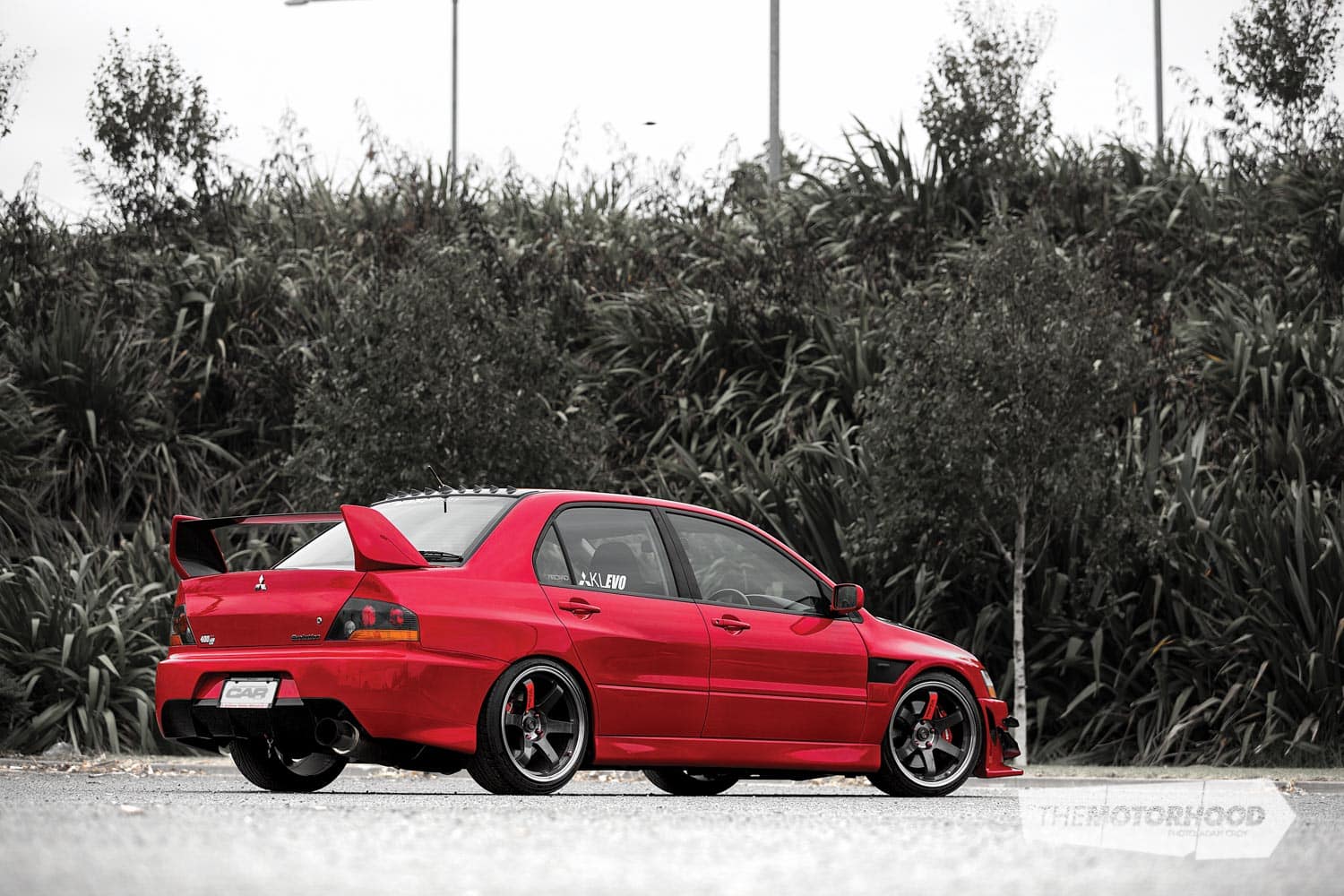
We’ve seen some hardcore Evo enthusiasts in our time, but not many who are as dedicated to evolving and developing the Evo lineup as Shoneel Ram. You see, this isn’t Shoneel’s first Evo, and it also isn’t his first time modifying the 4G63T engine. Shoneel has a love for the Evo line-up like no other, but his real passion lies in modifying the first incarnation of each chassis platform to make them perform better than that of the last. Take his previous Evo IV, for example, which was extensively modified to outperform the Evo VI.
Following on with the first incarnation theme, Shoneel sold the Evo IV and replaced it with a later model Evo VII — the first of the CT9A chassis — with the hope of one day building an Evo IX beater. The build didn’t start off immediately, as Shoneel wanted to enjoy the relatively stock example for a while as he explains, “I bought this Evo pretty much bone stock because I wanted a clean platform to start the build with. I drove it with minor bolt-ons for roughly two years and enjoyed the feel of driving a stock Evo after driving and owning my modified Evo IV for so long.”

With that being said, the modification bug was pestering Shoneel to get to work. “Slowly but surely I felt the need for speed, so I planned the whole build for about half a year and then proceeded with my plans. The initial build was a simple reflash of the ECU, fuel pump upgrade, and Kinugawa TD06-25G turbo, but as time went by the plans started to evolve as 300kW (402hp) just wasn’t enough,” stated Shoneel. With the initial power output now insufficient, the TD06-25G turbo was binned as it was evident the turbine housing would now be a major restriction in the quest for 400kW.
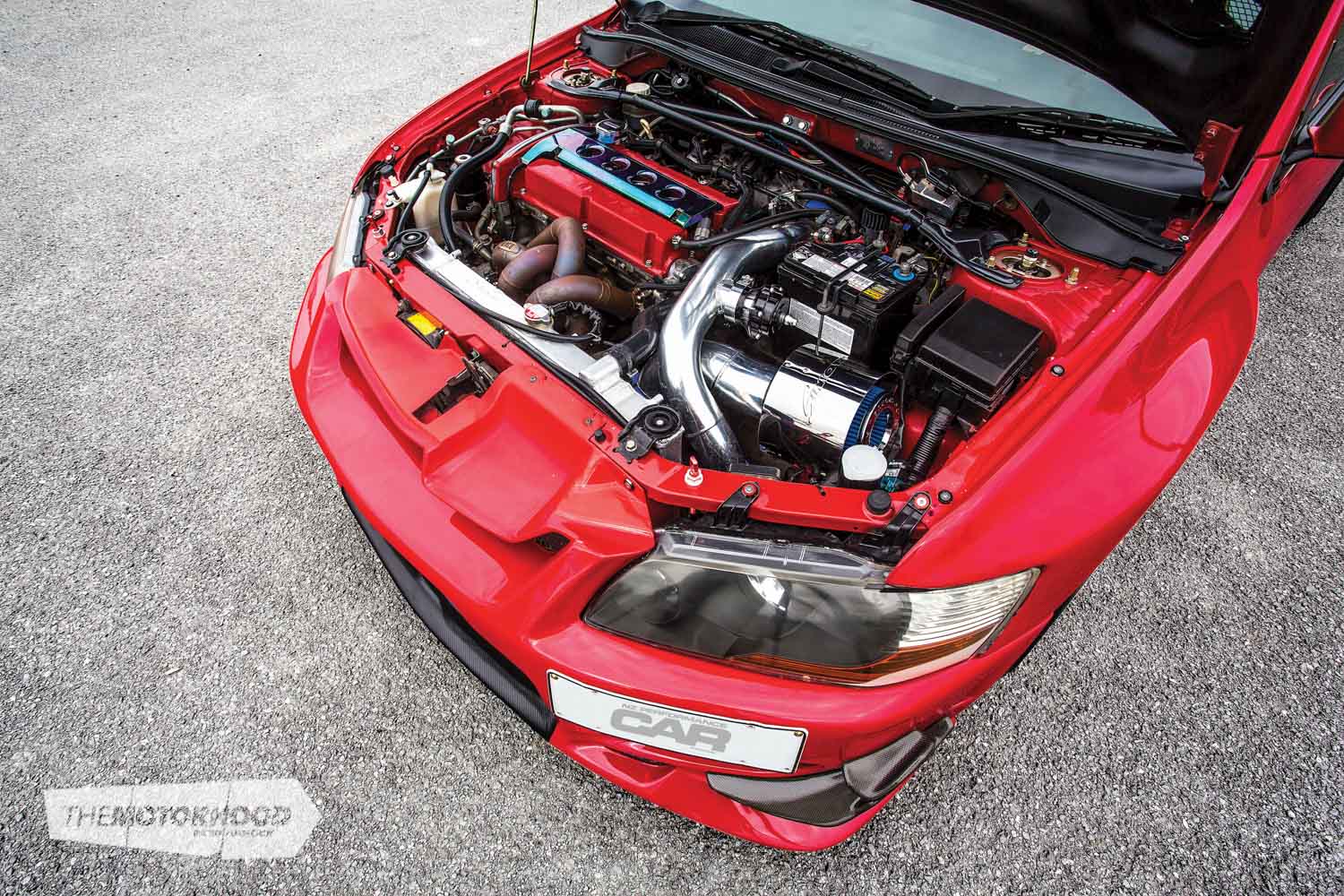
With an ambitious power goal in mind and not wanting to sacrifice streetability, it was decided extra capacity would be essential to spool a larger frame turbo. Wanting everything built correctly the first time, Shoneel enlisted Possum Bourne Motorsport for the engine build as they’d completed more WRX and Evo builds than you can shake a stick at. First off, a set of 85.5mm CP stroker–forged pistons, Manley 100mm–forged stroker crankshaft, and Manley-forged rods were purchased as they’re essential to get the capacity up to a much needed 2300cc, and compression up to 9.8:1. With the block now more or less bulletproof, the head was ported and polished in-house at Possum Bourne Motorsport and a set of Kelford 272 degree cams with Tomei adjustable cam gears were dropped in.
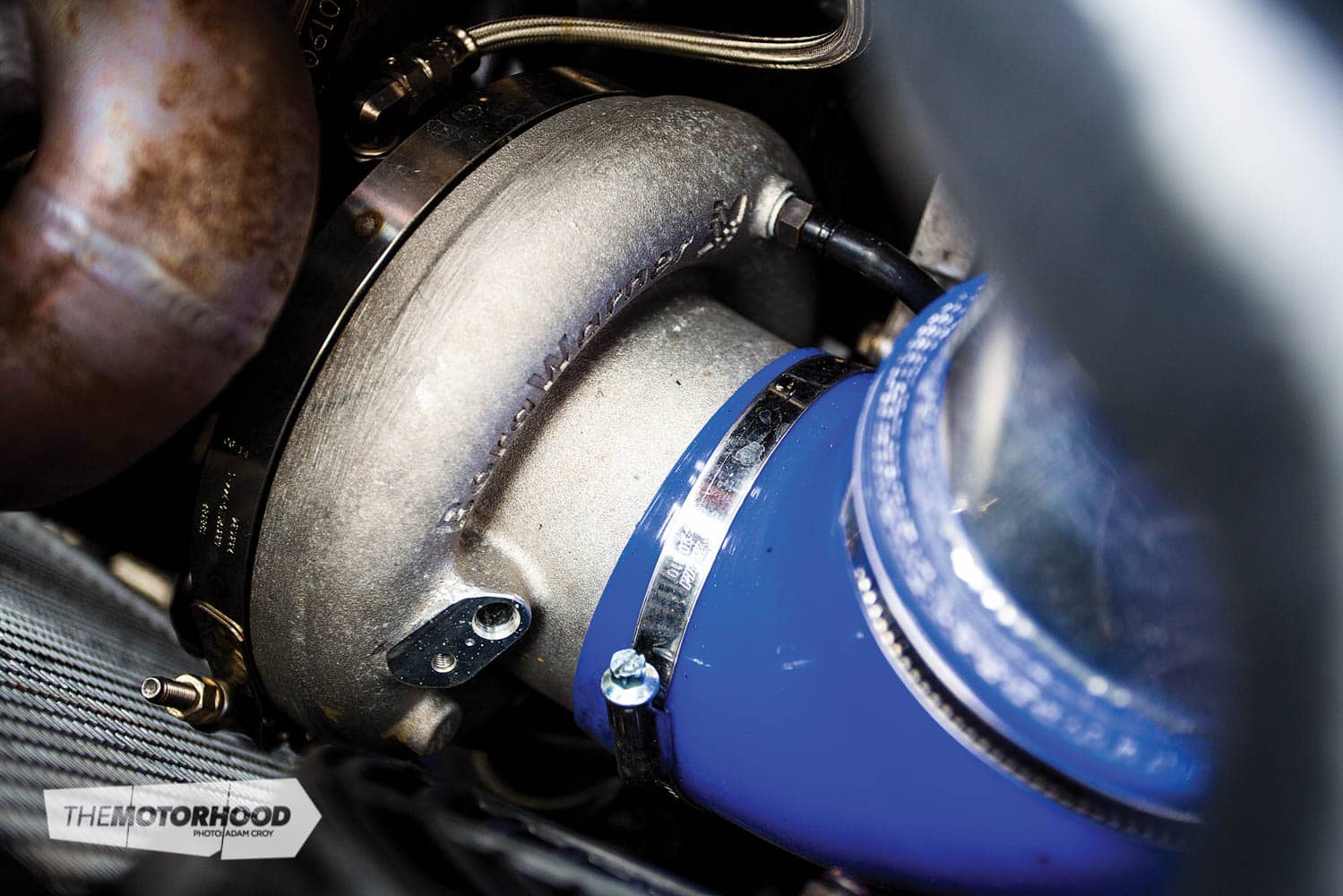
At this stage you’re probably wondering what turbo Shoneel required to warrant these modifications and you’d be correct in thinking it was something gargantuan. After seeking advice from several tuners, Shoneel finally decided on a BorgWarner EFR 8374 with a 1.05A/R rear housing and dual ceramic ball bearings — a gnarly unit for sure — which sits on a beefy Sinco manifold. As torque and response were the main criteria for the build, the Evo has been set up to run both E85 and 98 pump gas and every combination in between, thanks to the flex-fuel sensor. Four 1850cc FIC injectors flow enough of the good stuff to churn out 443kW (594hp) at the wheels on 30psi of boost with E85 and 360kW (482hp) on 98 octane, tuned at E&H Motors.
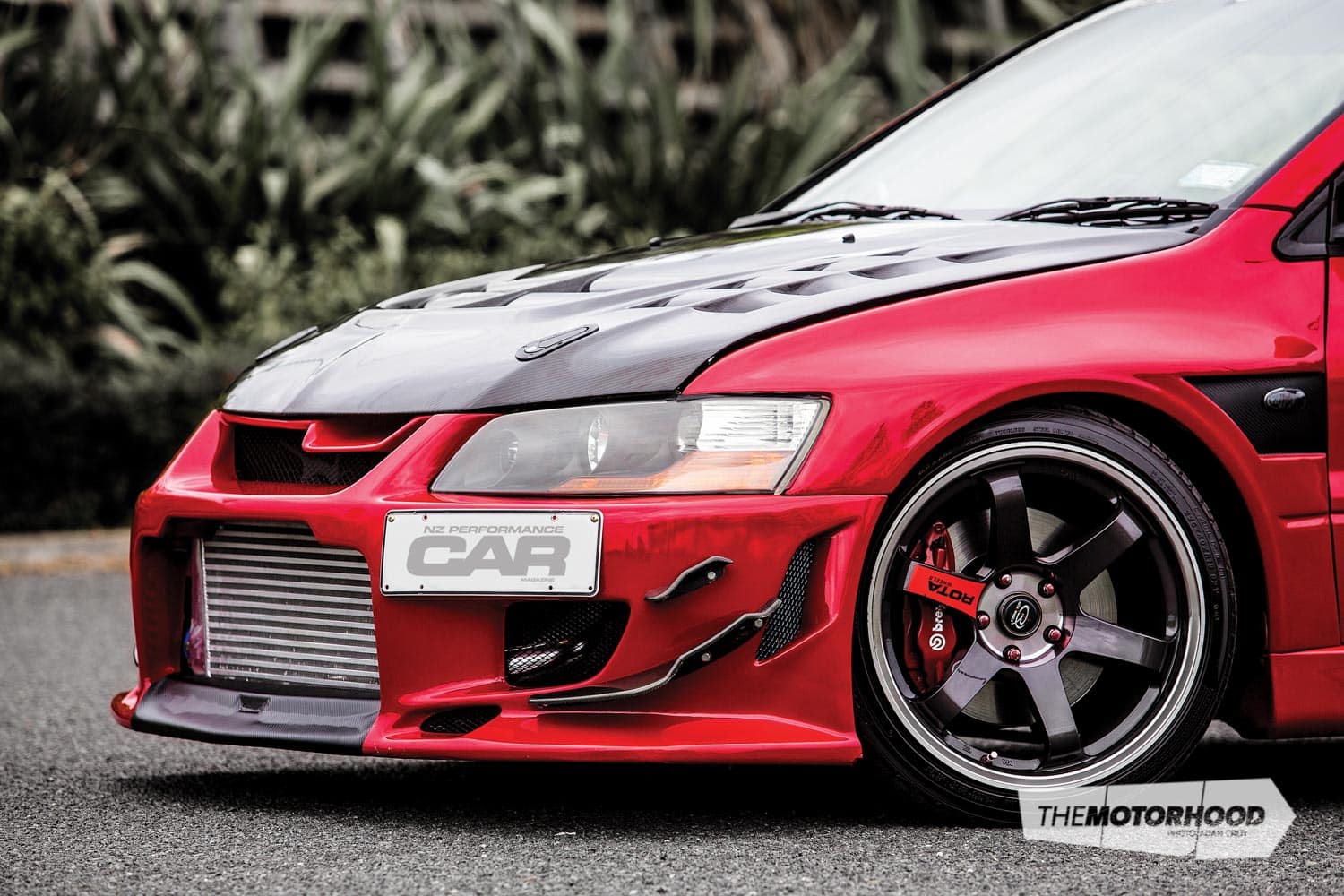
Is it an Evo VII, VIII, or is it a IX? We know that’s what you’re wondering, and yes it is an Evo VII, but the body has had extensive modifications to keep you guessing. Shoneel decided to take different sections from later model CT9A Evos to produce what he thinks is the perfect looking combination. The rear bumper and tail lights are from an Evo IX and the headlights, boot and carbon fibre spoiler are from an Evo VIII MR. To aid in the already aggressive Evo appearance, a C-West front bumper has been installed along with Voltex-style wide front guards, Voltex-style carbon fibre vented bonnet, and a carbon fibre vortex generator.
To finish the body off, Shoneel had the Evo resprayed in the factory rally red hue. In terms of wheels, 18×9.5-inch Rota Grids wrapped in stretched Falken FK452 tyres have been bolted to the factory Brembos and fill the wide guards perfectly. “I will need to switch to semi slicks soon as it wheel spins all four with the new power figure, and I haven’t even been harsh with it,” Shoneel muses.
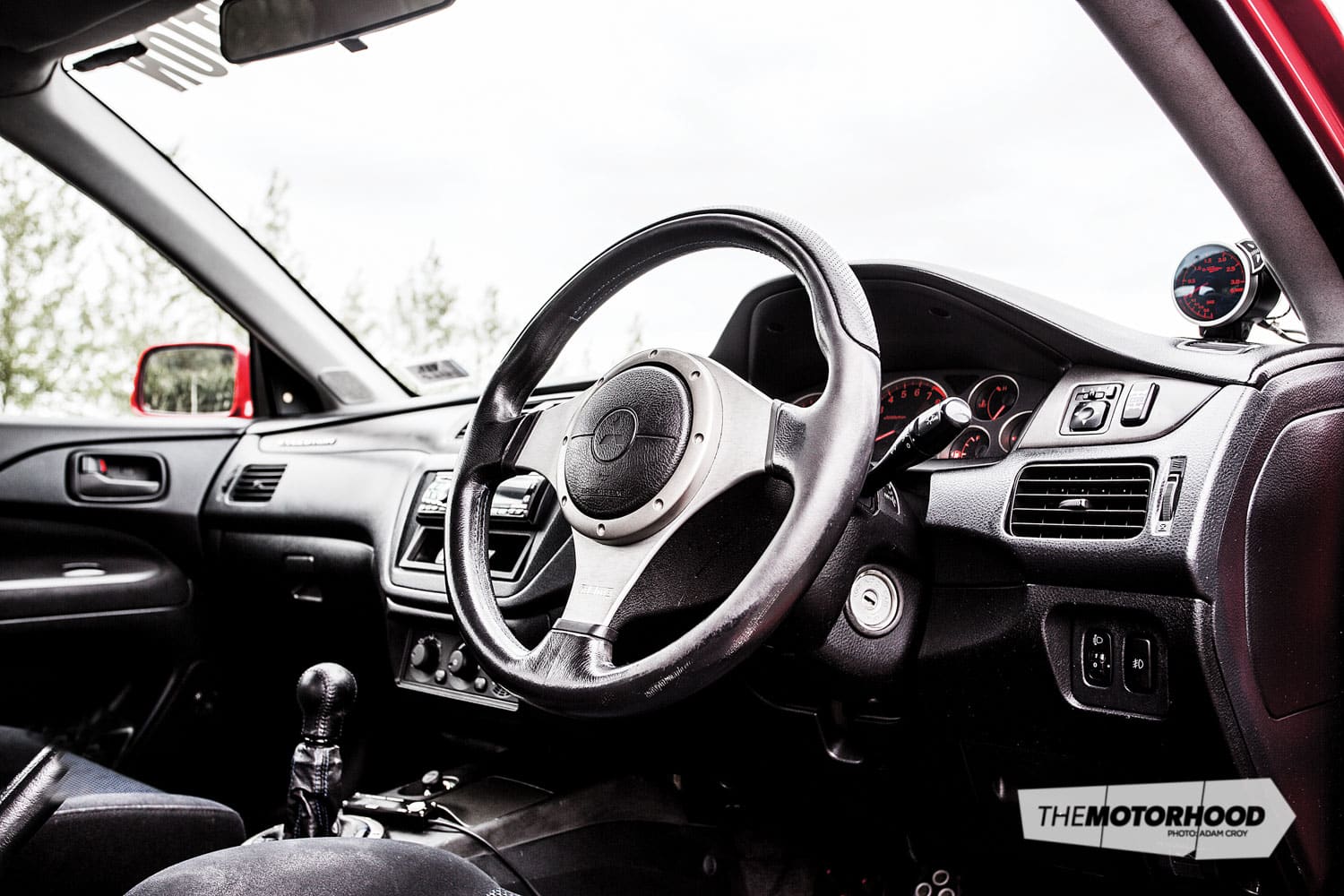
Out-of-the-box handling is fantastic in the CT9A Evos, but combined with a quality set of coilovers such as the BCs Shoneel runs, it improves considerably. Once the Evo has seen the track, Shoneel will have a much better idea about what areas will need attention next, but already he can tell us: wider guards, camber arms and slicks will be his next move, along with more power. It’s clear this build is far from finished as Shoneel explains, “I’m looking forward to hitting my new 500kW goal this year. Make no mistake though, the aim is to reach that level with a car that is daily driven, has good response and reliability. I do think the factory five-speed gearbox will find its limit soon.”
2001 Mitsubishi Lancer Evo VII (CT9A)
Engine
- Model: Mitsubishi 4G63T, 2300cc inline-four
- Block: 85.5mm CP forged stroker pistons, Manley forged rods, ACL racing journal and main bearings, Manley forged stroker crankshaft (100mm stroke), Tomei baffled sump, GSC race balance shaft delete
- Head: Kelford 272-degree cams, ported and polished by Possum Bourne Motorsport, Tomei adjustable cam gears, BC valve springs, titanium retainers, ARP head studs, ARP main studs
- Intake: Simota air filter, custom Sinco 4-inch stainless intake pipe, heat shield
- Turbo: BorgWarner EFR8374 dual ceramic ball-bearing turbo (1.05 a/r)
- Wastegate: 44mm TiAL MVR
- BOV: TiAL Q
- Fuel: Walbro fuel pump, FIC 1850cc injectors, aftermarket fuel rail, adjustable fuel pressure regulator, flex-fuel sensor
- Ignition: Spoolinup individual coil on plug setup, NGK spark plugs
- Exhaust: Sinco manifold, custom 3-inch turbo-back exhaust system, 4.5-inch tip
- Cooling: Redline Performance alloy radiator, 600x300x100 front mounted intercooler, custom intercooler piping
- ECU: Link G4 ECU, 4-bar map sensor, dual mapping for 98 octane and E85
- Other: D1-spec oil catch can, de-loomed engine bay, Tomei oil-cap, neo-chrome vented spark plug cover
Driveline
- Gearbox: Factory five-speed
- Clutch: ACT HDSS
- Flywheel: Machined factory flywheel
- Diff: Factory
Exterior
- Paint: Repainted in factory ‘rally’ red
- Enhancements: C-west front bumper, carbon fibre canards, Voltex-style wide-front guards, Voltex-style carbon-fibre vented bonnet, flush mounted bonnet pins, Evo VIII MR boot and carbon fibre spoiler, Evo IX rear bumper and tail lights, Evo VIII MR headlights, carbon fibre vortex generator
Support
- Struts: BC BR series coilovers
- Springs: BC
- Brakes: Factory Brembo calipers
Shoes
- Wheels: 18×9.5-inch Rota Grids
- Tyres: 225/40R18 Falken FK452
Interior
- Seats: Factory
- Steering wheel: Factory
- Instrumentation: 3 bar boost gauge, HKS turbo timer
Performance
- Power: 443kW (594hp) on 30psi of boost with E85
This article was originally featured in a previous issue of NZ Performance Car. Pick up your copy of the edition here:





